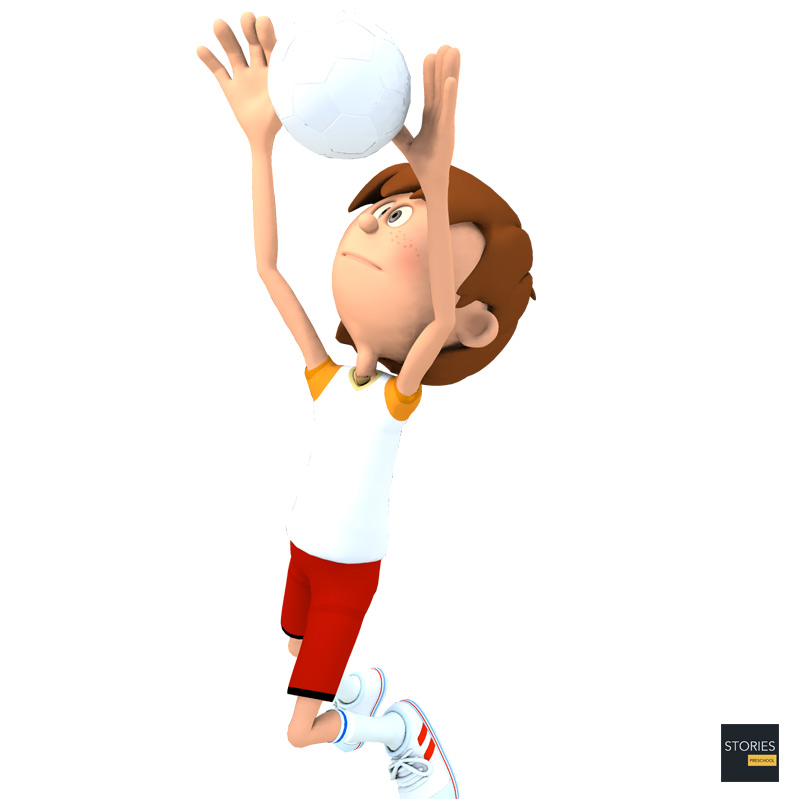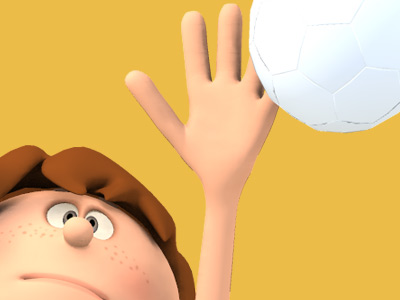Volleyball Rules of the Game
The court dimensions
A volleyball court is 18 m (59 ft) long and 9 m (29.5 ft) wide, divided into 9 m × 9 m halves by a one-meter (40-inch) wide net. The top of the net is 2.43 m (8 ft 0 in) above the center of the court for men's competition, and 2.24 m (7 ft 4 in) for women's competition, varied for veterans and junior competitions.
The minimum height clearance for indoor volleyball courts is 7 m (23 ft), although a clearance of 8 m (26 ft) is recommended.
A line 3 m (9.84 ft) from and parallel to the net is considered the "attack line". This "3 meter" (or "10-foot") line divides the court into "back row" and "front row" areas (also back court and front court). These are in turn divided into 3 areas each: these are numbered as follows, starting from area "1", which is the position of the serving player:
After a team gains the serve (also known as siding out), its members must rotate in a clockwise direction, with the player previously in area "2" moving to area "1" and so on, with the player from area "1" moving to area "6". Each player rotates only one time after the team gains possession of the serve; the next time each player rotates will be after the other team wins possession of the ball and loses the point.
The team courts are surrounded by an area called the free zone which is a minimum of 3 meters wide and which the players may enter and play within after the service of the ball. All lines denoting the boundaries of the team court and the attack zone are drawn or painted within the dimensions of the area and are therefore a part of the court or zone. If a ball comes in contact with the line, the ball is considered to be "in". An antenna is placed on each side of the net perpendicular to the sideline and is a vertical extension of the side boundary of the court. A ball passing over the net must pass completely between the antenna (or their theoretical extensions to the ceiling) without contacting them.
The ball
FIVB regulations state that the ball must be spherical, made of leather or synthetic leather, have a circumference of 65–67 cm, a weight of 260–280 g and an inside pressure of 0.30–0.325 kg/cm2. Other governing bodies have similar regulations.
A volleyball is a ball used to play indoor volleyball, beach volleyball, or other less common variations of the sport. Volleyballs are round and traditionally consist of eighteen nearly rectangular panels of synthetic or genuine leather, arranged in six identical sections of three panels each, wrapped around a bladder. However, in 2008, the FIVB adopted as its official indoor ball a new Mikasa with dimples and only eight panels for a softer touch and truer flight. A valve permits the internal air pressure to be adjusted.
Gameplay
Each team consists of six players. To get play started, a team is chosen to serve by coin toss. A player from the serving team throws the ball into the air and attempts to hit the ball so it passes over the net on a course such that it will land in the opposing team's court (the serve).

The opposing team must use a combination of no more than three contacts with the volleyball to return the ball to the opponent's side of the net. These contacts usually consist first of the bump or pass so that the ball's trajectory is aimed towards the player designated as the setter; second of the set (usually an over-hand pass using wrists to push finger-tips at the ball) by the setter so that the ball's trajectory is aimed towards a spot where one of the players designated as an attacker can hit it, and third by the attacker who spikes (jumping, raising one arm above the head and hitting the ball so it will move quickly down to the ground on the opponent's court) to return the ball over the net. The team with possession of the ball that is trying to attack the ball as described is said to be on offense.
The team on defense attempts to prevent the attacker from directing the ball into their court: players at the net jump and reach above the top (and if possible, across the plane) of the net to block the attacked ball. If the ball is hit around, above, or through the block, the defensive players arranged in the rest of the court attempt to control the ball with a dig (usually a fore-arm pass of a hard-driven ball). After a successful dig, the team transitions to offense.
The game continues in this manner, rallying back and forth, until the ball touches the court within the boundaries or until an error is made. The most frequent errors that are made are either to fail to return the ball over the net within the allowed three touches, or to cause the ball to land outside the court. A ball is "in" if any part of it touches a sideline or end-line, and a strong spike may compress the ball enough when it lands that a ball which at first appears to be going out may actually be in. Players may travel well outside the court to play a ball that has gone over a sideline or end-line in the air.
Other common errors include a player touching the ball twice in succession, a player "catching" the ball, a player touching the net while attempting to play the ball, or a player penetrating under the net into the opponent's court. There are a large number of other errors specified in the rules, although most of them are infrequent occurrences. These errors include back-row or libero players spiking the ball or blocking (back-row players may spike the ball if they jump from behind the attack line), players not being in the correct position when the ball is served, attacking the serve in the front court and above the height of the net, using another player as a source of support to reach the ball, stepping over the back boundary line when serving, taking more than 8 seconds to serve, or playing the ball when it is above the opponent's court.
Scoring
When the ball contacts the floor within the court boundaries or an error is made, the team that did not make the error is awarded a point, whether they served the ball or not. If the ball hits the line, the ball is counted as in. The team that won the point serves for the next point. If the team that won the point served in the previous point, the same player serves again. If the team that won the point did not serve the previous point, the players of the serving team rotate their position on the court in a clockwise manner. The game continues, with the first team to score 25 points by a two-point margin is awarded the set. Matches are best-of-five sets and the fifth set, if necessary, is usually played to 15 points. (Scoring differs between leagues, tournaments, and levels; high schools sometimes play best-of-three to 25; in the NCAA matches are played best-of-five to 25 as of the 2008 season.)
Before 1999, points could be scored only when a team had the serve (side-out scoring) and all sets went up to only 15 points. The FIVB changed the rules in 1999 (with the changes being compulsory in 2000) to use the current scoring system (formerly known as rally point system), primarily to make the length of the match more predictable and to make the game more spectator- and television-friendly.
Libero
In 1998 the libero player was introduced internationally. The libero is a player specialized in defensive skills: the libero must wear a contrasting jersey color from his or her teammates and cannot block or attack the ball when it is entirely above net height. When the ball is not in play, the libero can replace any back-row player, without prior notice to the officials. This replacement does not count against the substitution limit each team is allowed per set, although the libero may be replaced only by the player whom he or she replaced.
The libero may function as a setter only under certain restrictions. If she/he makes an overhand set, she/he must be standing behind (and not stepping on) the 3-meter line; otherwise, the ball cannot be attacked above the net in front of the 3-meter line. An underhand pass is allowed from any part of the court.
The libero is, generally, the most skilled defensive player on the team. There is also a libero tracking sheet, where the referees or officiating team must keep track of whom the libero subs in and out for. There may only be one libero per set (game), although there may be a different libero in the beginning of any new set (game).
Furthermore, a libero is not allowed to serve, according to international rules, with the exception of the NCAA women's volleyball games, where a 2004 rule change allows the libero to serve, but only in a specific rotation. That is, the libero can only serve for one person, not for all of the people for whom she goes in. That rule change was also applied to high school and junior high play soon after.
Recent rule changes
Other rule changes enacted in 2000 include allowing serves in which the ball touches the net, as long as it goes over the net into the opponents' court. Also, the service area was expanded to allow players to serve from anywhere behind the end line but still within the theoretical extension of the sidelines. Other changes were made to lighten up calls on faults for carries and double-touches, such as allowing multiple contacts by a single player ("double-hits") on a team's first contact provided that they are a part of a single play on the ball.
In 2008, the NCAA changed the minimum number of points needed to win any of the first four sets from 30 to 25 for women's volleyball (men's volleyball remained at 30.) If a fifth (deciding) set is reached, the minimum required score remains at 15. In addition, the word "game" is now referred to as "set".
Changes in rules have been studied and announced by the FIVB in recent years, and they have released the updated rules in 2009.
SPORTS

RESOURCES
This article uses material from the Wikipedia articles "Volleyball" and "Volleyball (ball)", which is released under the Creative Commons Attribution-Share-Alike License 3.0.
© Stories Preschool. All Rights Reserved.









